Susak expo 2016
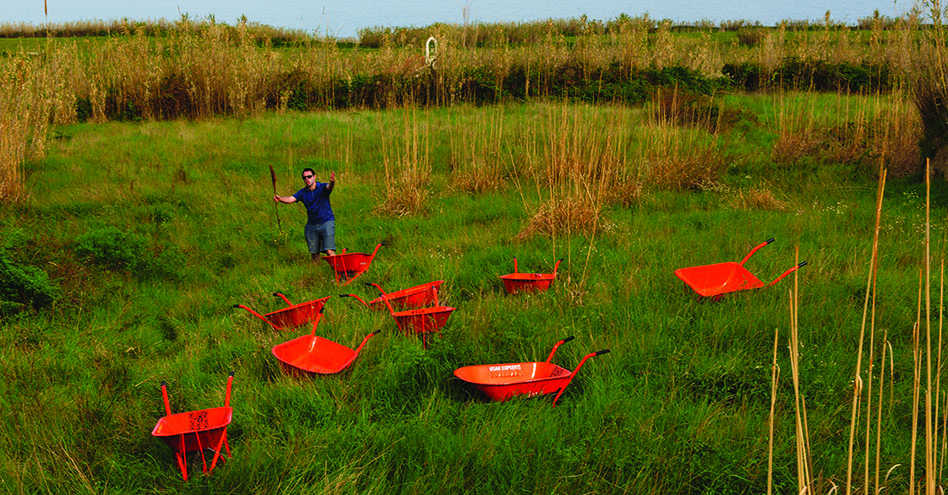
Susak
6-16 May 2016
House 600, Susak
PV / OPENING: Thursday 12 May
exhibition until end of September
Palača Fritzi, Museum of Mali Lošinj
PV / OPENING: Friday 13 May
exhibition from 13 May to 22 May
ArtHelix, Brooklyn, NY
Musée Des Civilisations, Dschang, Cameroun
Muzej Macura, Novi Banovci, Serbia
Mali Salon, Korzo 21, Rijeka (Croatia)
Curated by Keran James and Herzog Dellafiore
Susak expo begins as an idea to extend platforms by exchanges of contexts and languages through dialogues between people and locations. It’s an idea on the move, an idea in translation. Translation can slip between languages to structure networks of thought. It enables simultaneous experiences to interact. It is vulnerable and open to incompletion as well as failure and misunderstanding. The project may fail or it may succeed, its outcome and even the idea of its completion is uncertain. And because of this openness it is vulnerable, this is its character. [Jo Melvin, 2006]
.
Artists:
artists:
Elisa Bollazzi / Microcollection
Daniela Leupold Löwenthal
Peter Znidaric Seewasser
Liberty Antonio Sadler
Werner Mandlberger
Brian Dawn Chalkley
Alessandra Sormani
Christoph Aschauer
Hassan Abdelghani
Natalie Anastasiou
Tomislav Brajnović
Gianfranco Mirizzi
Dorothy Dellafiore
Herzog Dellafiore
Ada Kobusiewicz
Kagweni Micheni
Camille Bonanza
Andreas Schatzl
Markus Dressler
Robert Findenig
Igor F. Petković
Gabriele Sturm
Cedric Christie
Christian Wabl
Christine Punz
Boris Mihaljčić
Danka Nisević
Dominik Grdić
Olivia Strange
Michael Maier
Gašper Jemec
Hermann Fink
Dejan Štifanić
Romina Dušić
Daniela Urem
Avo Zimmerl
Daniel Devlin
Keran James
Sally Gordon
Elena Perugi
David Brock
Janko Matić
Michael Eisl
Ulrike Tisch
Caro Streck
Doug Lewis
Georg Miks
Chel Logan
Tom Bayer
Tash Kahn
Oliver Ertl
Petra Varl
Chelsea Salon
studio1.1
studio1.4
FKuK RIVIERA
………………………………………………………………………………………………….
Daniel Devlin, a method painter and its co-founder, has kindly agreed to respond to the following questions about this year’s Susak Expo. It may be worth noticing that the highly-respected Italian American art critic, Jennifer Viviani, has described Devlin, in one of her influential essays in 2006, as: “a self-confessed cynic […] An expert in making meta-works: objects and statements that explain art or function as its accessories or souvenirs, but can never be taken for the artworks themselves […] ‘One must not spend time doubting, one must just begin’ is the opening slogan for one of Daniel Devlin’s films, and yet Devlin never really begins any art. In fact, Devlin habitually avoids making any art, preferring rather to languish in the Ur stages of the art process. He frets not about what artwork he will make but rather indulges himself in neurotic self-analysis about what art itself is. In the video Conversation, Devlin and his Doppelganger (the artist plays both characters) sit around drinking coffee, one of the Devlins boring the other with rhetorical questions regarding the definition of ‘art’. Devlin 1 ponders one such definition he has read as ‘culturally significant meaning skilfully encoded in affecting sensuous medium’, a phrase he muses over until he drives Devlin 2 so crazy that he throws a glass of water over him. With a background soundtrack of canned audience laughter, booing and hissing, the philosophical questioning here is reduced to the slapstick humour of an American sitcom. Devlin is not really interested in finding answers; if he were, then he would have to get on and make some art, not lazy conversation.” There is nothing more encouraging than a visceral review by an acclaimed art critic.
What are the benefits of organising a biennale that no one sees?
The original reason for organising the Susak Expo was as a reaction to all the art fairs, biennales and museums of contemporary art sprouting up everywhere, and to highlight the absurdity of this proliferation by staging an international art biennale in the most unlikely of places where, apart from a few people seeing it by mistake and, of course, the participating artists, the chances are no-one will see it. The first three editions had an advert in Frieze magazine, and I like the idea that there was a remote chance that someone might mistake it for a ‘proper’ biennale and actually turn up.
If a tree falls in a forest and no-one is around to hear it, does it make a sound? Is art validated if no-one sees it?
Since no-one sees the exhibition, the objects created for it (paintings, installations, photographs etc) lose importance, while what becomes central is the whole experience of artists sharing time and ideas. When the Expo is over, some of the objects will still be there for a while, like strange artist droppings.
Maybe people should ask themselves – what are the benefits of a biennale that people do see? And maybe realise that the desperate and misguided search for exposure and acceptance is possibly not where we should focus our energy. And, possibly, consider the idea that art might be somewhere unexpected.
Artists crave exposure. Do you prepare them in advance of the zero attendance? What are their reactions?
One hopes that not all artists feel the same way about exposure. You get all sorts of artists with all sorts of intentions. Artists are made aware that generally no-one turns up to the Susak Expo; I want the artists to be OK with the concept and possibility of failure, or even to embrace failure as a desirable outcome. The possibility of failure ensures the unpredictability of the expo. So even if there is a storm for ten days and we are not able to get to the island at all, Susak Expo will still have happened.
Many artists don’t care, as long as it will look good on their CV they’re game, But most of the ones who think like that quickly figure out that Susak Expo most probably isn’t going to look great on their CV anyway, so I don’t get many of these. They would rather participate in an ‘anyone goes’ group show featuring many dozens of artists, where you take in your object (often the same object you’ve taken to previous shows), leave it there for a week (sometimes longer) and then take it away. Your exposure is minimal (unless your name starts with an A and some punter might have read your name scrolling down the first few names in a very long list of artists listed in a tiny font on the A4 flyer), but the gallery is in the right area and it will look good on your CV. My advice is not to bother; it’s easier just to make up your CV and fill it with as many exhibitions (group or solo), real or invented, as you want. I wouldn’t put in too many big shows, though; I would balance it out with some minor ones.
It has happened that artists have misguidedly believed that Susak Expo is a ‘proper’ art event, and even though it would have been explained to them that failure is cool and no-one will see their show, they don’t believe it. These artists hate the experience and add a bit of friction to the event (not necessarily a bad thing). On one occasion, when we had the show opening in the museum in Mali Lošinj, two artists in particular had put in a lot of effort and preparation and put up some quite impressive work. Since the Expo is all about the time leading up to the show, the openings tend to be perfunctory, and these two couldn’t cope with nobody seeing their work; they dragged in an unsuspecting guy from the street – who politely stayed a couple of minutes before clearing off.
Some artists seek to disappear in plain sight. They understand the whole thing completely and it is them who tend to come back.
How do you switch roles between being the Susak Expo’s founder and a participant artist?
I think that we are all founders and participating artists. I see the Expo as a collaborative venture that allows space for each of our individual practices.
Are your expectations different from previous editions? In what way?
Not that different. When you build ‘failure’ into your model as not merely a by-product but a goal, then each Expo has a chance to be both different and yet the same.
There are couple of new things that are exciting me – the documentation of the work will be shown at ArtHelix in Brooklyn and at the Musée des Civilisations in Dschang (Cameroon), which will make this biennale properly international.
Another thing – but I will believe it only when it has happened – is that this year we might have someone who is neither a participating artist nor someone local who has stepped in by mistake (or been dragged in against their will), who will fly to Croatia from San Diego in California, specially to catch the opening. It’s great to think that for the 10th anniversary of the Expo, we finally get a real visitor!
What is the reason behind the concept of inviting the artists to make interventions in the landscape?
There seems little sense in travelling to the other side of Europe if not to make site-responsive work. Susak is not just about isolation; it does sit within a wider context and, whether politically or geographically, artists are encouraged to respond to the place and to reconsider their own practices.
………………………………………………………………………………………………….
- Superman Overflight/Prelet Supermena, photo/performance, 2015
- Looking in the moon for 10 seconds, 2015
- Grief for Tito/Tuga za Titom, Vis, 2014
- Covering/Pokrivanje, documentation of a performance realised during Vrbnik May Day Assembly, 2015.
- Kažun (traditional Istrian rain shelter), photo/performance, 2015
- 10 Hot Seconds, photo/performance, Delta 5, Rijeka, January 2015
………………………………………………………………………………………………….
Elisa Bollazzi / Microcollection
MICROCOLLECTION / Elisa Bollazzi
The idea for the Microcollection Museum came to me in May 1990 when I was visiting the British Pavilion at the Venice Biennale and – almost by chance – picked up a few fragments that had accidentally fallen onto the floor from a fantastic work by Anish Kapoor.
These microparticles, overlooked by everyone else, were an illumination and triggered a completely fresh approach to my meandering around the art circuit in Italy and elsewhere in the world in search of new “micro-acquisitions” that would otherwise be trodden underfoot and chucked out with the rubbish!
Microcollection now boasts hundreds of fragments of contemporary art works saved from oblivion. The fragments are mounted on ordinary laboratory slides, and can be viewed under a microscope.
Microcollection owns an important collection of contemporary art, prominent movements such as Fluxus, Pop Art, Minimal Art, Conceptual Art, Arte Povera and many renowned artists like Joseph Beuys, Daniel Buren, Tony Cragg, Piero Gilardi, Giuseppe Penone and many others.
In 2008 I promoted the so-called Art sowings, the creation of land planted and cultivated with art, with valuable microparticles of artworks whose titles clearly show the selection criteria adopted: The 3-metre tree by Penone, Watermelons by Gilardi, Garden by Paul McCarthy and so on.
Areas planted with art fragments constitute utopic art-gardens, thought-provoking spaces, meeting points where the work of art stimulates creativity and changes the way we look at the “art system”.
« Elisa Bollazzi is the director of Microcollection, a curatorial practice that rescues miniscule fragments shed by art shown in venerable, international exhibitions; the list of “works” collected is extensive and still growing. Reducing art collection to such a small scale effectively corrects overheated art-fair values through subtle personal intervention » ( Elizabeth Johnson http://www.theartblog.org/2014/11/exchange-rates-the-bushwick-expo/ )
Susak Expo Microcollection project
I am so glad to take part in the Susak Expo, it is a great opportunity for me to share ideas and experience with international artists on a beautiful island.
My idea for this Susak Expo is to pick up art fragments fallen onto the ground from all the artworks produced there and add them to my collection. One day I will show them under a microscope in a special Cabinet de regard dedicated to Susak Expo. Long life to Susak Expo 2016, then!
I will also plant some Microcollection art particles in a secret garden, so that Susak Island will be enriched with rare art trees, art flowers and art plants.
I am also going to write a short tale on this experience by using my multi-directional, whirlwind, surreal writing.
———————————————————————————————————–
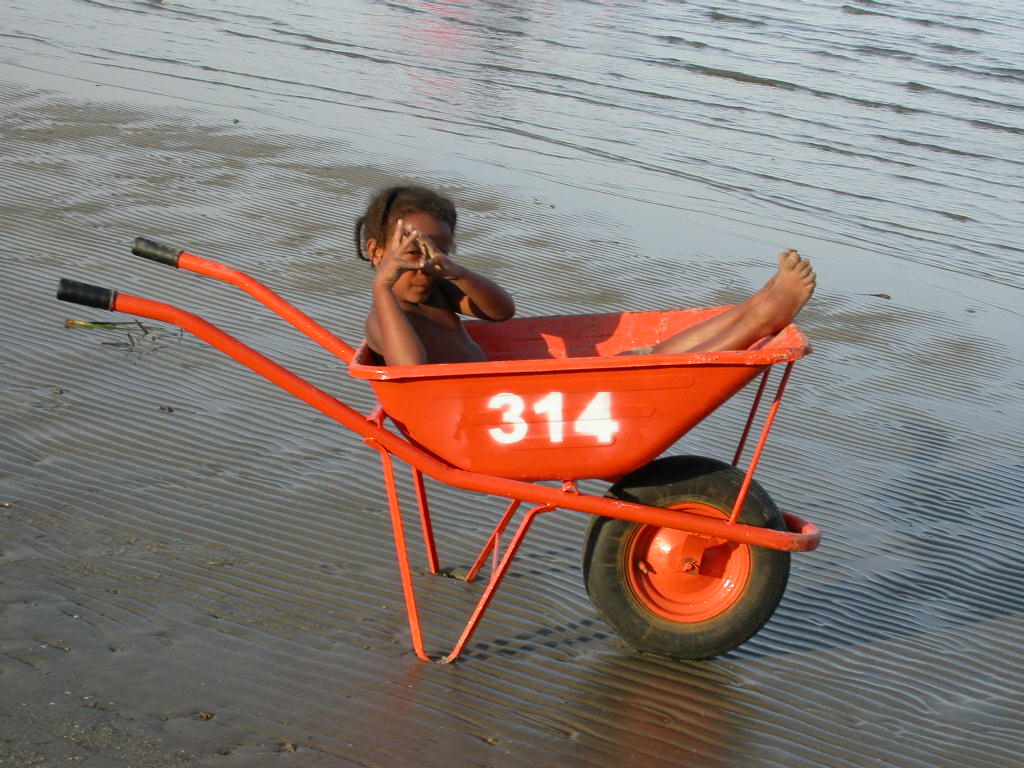
………………………………………………………………………………………………….
Petra Varl was born in 1965 in Ljubljana, Slovenia. In 1997 she obtained a Master’s degree in Fine Arts from the the Academy of Fine Arts and Design in Ljubljana. Petra Varl works as a visual artist in the media of drawing, graphic arts, painting, illustration and installations. She has shown her work in numerous independent and group shows, including the Sao Paolo Biennial (1996, Sao Paolo), Museum Mudzarnok (1996, Budapest), MUMOK (2009, Vienna), National Gallery Zaceta (2010, Warsaw). Her last artbook “Drawings” (2015), was selected for the collection of Metropolitan Museum of Modern Art in New York. Since the year 2000 she has been teaching drawing and graphic arts at the Fine Arts Department of the Teacher’s College of the University of Maribor. She lives and works in Ljubljana, Maribor and Susak.
Petra Varl’s style is certainly one of the more recognizable ones in Slovenian art. The artist succeeded in developing an artistic language, which on one hand preserves a unique personal poetics and on the other consistently testifies about the time and space through which the artist is moving. But Petra Varl’s every line does not merely record a state of affairs but above all of the nascent relationships and relations within society. This is why Petra Varl’s images seem to be personal testimonies that the artist anchors to societal relations and thus directly intervenes in the realm of our everyday life.
Tevž Logar, text for the leaflet for the group show Art in Each Household in Mestna Galerija Slovenj Gradec, 2015
I love Susak. We have a house there and we are coming to the island every summer for at least two months. It is a very inspiring place and I love to work in my small studio.
I like to draw in space. That is my thing.
I make a drawing and than install it in the space, so that the space works as its surrounding, like the background on the paper or canvas. Sometimes I make the drawing somewhere on the existing wall or bring already made drawings and install them in various situations.
For this Susak expo I will bring my drawing as cut-outs, install them in different spaces of Susak and hope it will work.
Petra Varl
https://www.facebook.com/petravarl/
………………………………………………………………………………………………….
austria free-house in susak. 6.-16. may 2016
artist group: karin goldgruber, horacio martin millitello, robert findenig and guests..
we are proud for your invitation and we are looking forward to “rock” the susak-island in an artistic-way.! the plan is to construct a free-house to put our art inside. we won`t bring any material for the housebuilding with us. karin will bring canvas and colour. horacio`s plan is to install his “digital sunglock”. robert findenig will bring a lot of plaster and a egg-shape. in a few days we gonna build our free-house, which will be on the end of our period of residence, a nice gallery, coffee shop etc.. we`ll try to create the house as an permanantly installation by using goods/material, which susak will prepare for us; but the nature can have the resources back if she want or decide. also the art is kind of fading like everything. in that case, all the people which are showing interest in art and finding the free-house-gallery, will be able to see the transformation later on. pictures, objects and other produced art, will show constantly new. until they are fading away.. in that case, we will use biological material. we can also make people aware, by putting austrian manners in the project; for trying to respect the nature and by putting new effects into the morphogenetic-field. so, let`s go for the flow..!
robert findenig, 26.2.2016
………………………………………………………………………………………………….
FKuK RIVIERA – holiday of the convention
art guerilla camp /: [nudist colony]:
The 10-day international artistic and scientific Symposium “FKuK RIVIERA – Holiday of the Convention“ with up to 5 artists and scientists from the participating countries Austria and Croatia come togehther on the Croatian island of Susak to spot new, process-oriented artistic and scientific positions on the subject of act, naturism and nudism in the Media photography, painting, film, literature, music and performance, including historical and contemporary Trends emerge. During the symposium, participants artists can direct their knowledge and Apply self experiences in the nudist community and convert into contemporary forms of art. A sensitive Interaction with naturists, but also open processes are made possible and will enrich aN aesthetic and critical discourse
Continuation of the project “FKuK RIVIERA – Holiday of the Convention“, see enclosed blank concept (in german).
Project leader: Igor F. Petkovic (CULTerror) in cooperation with Peter Znidaric Seewasser
Over 100 years ago as an expression of radical reform of life in German-speaking countries, nudity has become a wide, global phenomenon in society and the media. Every year there are hundreds of thousands Naturists- and Nudists on nude beaches and enjoy this natural way of life free from the otherwise prevailing conventions. Nudity in advertising, in reality shows and in political and artistic activism are widespread. Nudity has become omnipresent, but what it says about our culture, society and values? What is behind the bare facts and tell them what story?
FKuK RIVIERA – Holiday of the Convention is a 10-day symposium to create artworks that explore the nude human body in context of nature, culture and art. The artists will live as naturists on the beach of Susak to create works that explore contemporary questions to nudity: What today means nudity in a (overerotic) media company? How can naturism and nudism contribute to a contemporary (body) consciousness and a harmony with nature? What was and is a naked body and what he says about the usual conventions? How designed is physical beauty (form the norm)? What important role played Austria and Croatia in the development of an global and nudist movement? Does stripping away clothing rid us of class, gender, and personal expression? Do the connections between our bodies and the land change when nude? What is the role of the nude in historical and contemporary art?; The artists work individually or collaboratively to create artworks that explore these questions through media of their choice, such as photography, video, installation, drawing, painting, performance art, dance, sound art, media art, music, etc.
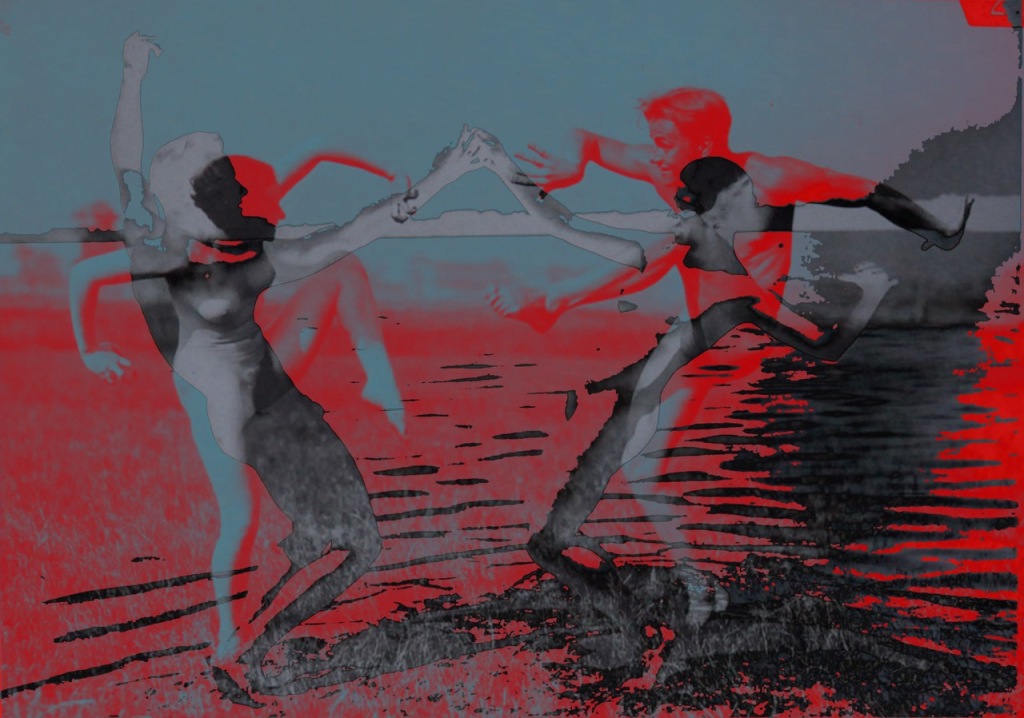
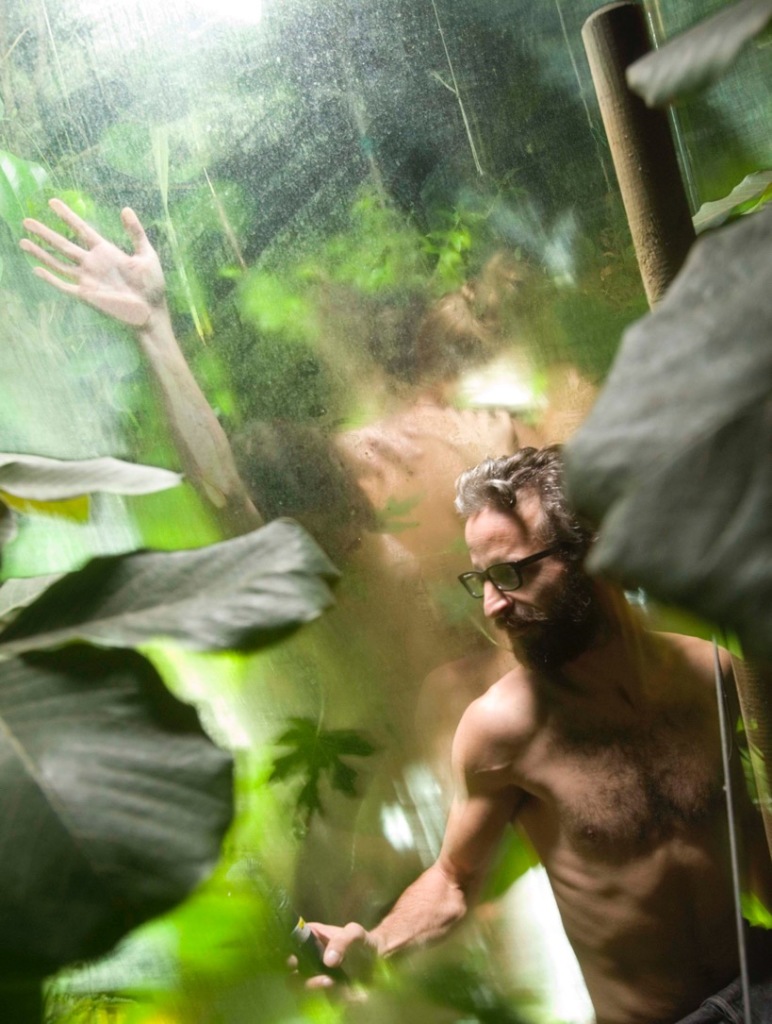
© elmar gubisch


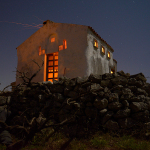


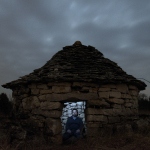
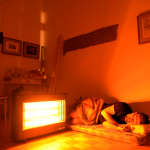
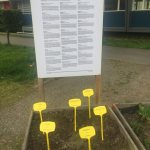

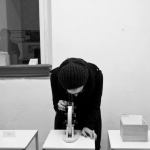







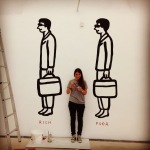

Leave Comment :